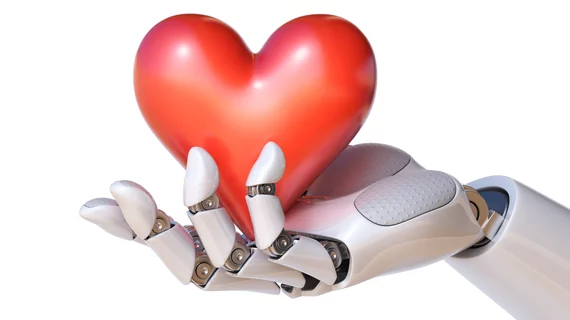Researchers 3D-print heart components using collagen
Researchers at Carnegie Mellon University’s College of Engineering have devised a way to 3D bioprint tissue scaffolds out of collagen, putting them one step closer to the goal of printing a full-sized, functional human heart.
Adam Feinberg’s lab is responsible for the latest development, known as Freeform Reversible Embedding of Suspended Hydrogels, or FRESH. Feinberg, a professor of biomedical engineering and materials science and engineering at Carnegie Mellon, spearheaded the effort that leveraged collagen, the body’s major structural protein, to reproduce sections of a human heart.
“What we’ve shown is that we can print pieces of the heart out of cells and collagen into parts that truly function, like a heart valve or a small beating ventricle,” Feinberg said in a release. “By using MRI data of a human heart, we were able to accurately reproduce patient-specific anatomical structure and 3D bioprint collagen and human heart cells.”
Collagen is present in virtually every tissue in the human body, but, as Feinberg and his team explained in Science, it can be hard to work with in a 3D-printing capacity because it starts out as a fluid. If you try to print collagen in air like a traditional 3D print, it would end up a puddle on your build platform.
FRESH prevents that by depositing collagen layer by layer into a support bath of gel, allowing the protein a chance to solidify in place before it’s removed from the support bath. When the collagen is removed, excess gel can be melted away without damaging the final product.
Feinberg said his team is “making real progress” toward engineering functional human tissues and organs—an endeavor that could greatly benefit the more than 4,000 patients in the U.S. currently waiting for a heart transplant. Millions more patients need new hearts worldwide but are ineligible for waitlists.
The team at Carnegie Mellon is extending its platform to other labs around the country, providing access to its open-source designs to entities from professional labs to high school science classes. Feinberg said FRESH is unique in that it’s not limited to collagen but can also print a range of other soft gels, including fibrin, alginate and hyaluronic acid.
“Really what we’re talking about is the convergence of technologies,” he said. “Not just what my lab does in bioprinting, but also from other labs and small companies in the areas of stem cell science, machine learning and computer simulation, as well as new 3D bioprinting hardware and software.”

